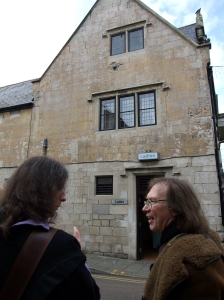Today, 10th February 2015 marks the 370th anniversary of the commencement of the Siege of Melcombe. It lasted for almost a week and followed the surprise attack by Portlanders upon the two main forts of Weymouth. With superior numbers, ordnance and a massive height advantage, the Royalists were determined to bombard the much smaller garrison of Melcombe, commanded by the Parliamentarian Colonel William Sydenham, into submission.
(excerpt from The Crabchurch Conspiracy, by Mark Vine)
Colonel William Sydenham now had a very sizeable problem to wrestle with. He had less than nine hundred men under his command in Melcombe and was faced across the water by an ecstatic enemy now numbering in excess of two thousand troops; an enemy who would not long be content to sit and do nothing. Mourning the loss of Francis, perhaps the two remaining Sydenham brothers present gained an inner strength from his example and resolved to reverse their fortunes. But above all, they desired with all their hearts to avenge themselves upon his slayers.
Three days after the ‘surprise of the forts’, it is recorded that a number of Cavaliers took themselves off to an area near Radipole called Causeway, where along with a Master Wood, the clerk curate of Sutton Poyntz they “regaled themselves at an alehouse and became distempered with beer”.
Sadly though, for the besieged Parliamentarians within the town of Melcombe, not all of the King’s men were occupied thus, as the ever trusty pen of Preacher Ince relates. He wrote: “A multitude of great bullets and iron bars, hot and cold poured in to Melcombe, some of their gunners engaged themselves to level us with the ground” A protracted and internecine siege had begun as the two sides began to bombard each other with what ever came to hand. However, the King’s men, Dyve and Hastings, secure in Weymouth, had the massive advantage of having the much higher ground and specifically, the guns of the Chapel Fort and the Nothe Fort which were now perpetually trained upon their enemy. And this advantage eventually began to tell as they continually pounded the lower town of Melcombe causing great damage and injury and reducing many buildings there to rubble.
William Sydenham had decided to make a fight of it though and soon he was answering in kind. A fierce two way bombardment ensued lasting several days. Eventually Sydenham sent Dyve a message saying “let us cease this useless burning”, but Dyve believing he had the upper hand for once answered “we refuse to parley with you and will do what we please”.
This snub only served to infuriate Colonel William Sydenham and the very same evening under cover of darkness, he sent a small raiding party across the water in boats. They set alight several vessels and houses on the Weymouth side and caused great damage and mayhem in the Royalist camp. The next day Sir Lewis ceased the bombardment for good.
A tangible glimpse of the almost week long artillery duel can be seen in the wall of a seventeenth century house in Maiden Street, in Melcombe. These days the downstairs is rather strangely, a public toilet, but high up beneath the top window, is lodged a cannonball and the fabric of this lovely building can clearly be seen to be damaged around the point of impact.
The present ball is apparently not the original missile however, but a wooden replica, the real one being removed for safety sake. Local legend has the ball being fired from the fort on the Nothe, though it is quite possible that is was fired from a royalist ship which could have chanced its luck and got in whilst their side held the Nothe Peninsula during February 1645.1


Reblogged this on Victorian tales from Weymouth and Portland.